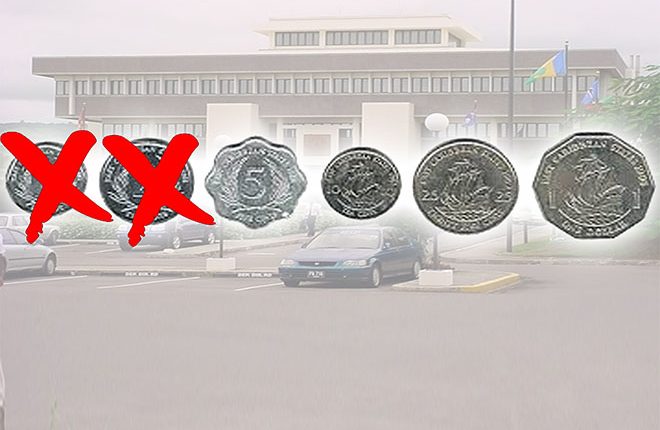Basseterre, St. Kitts (SKNIS) — Media professionals from across the Eastern Caribbean Currency Union (ECCU) have been asked to assist Eastern Caribbean Central Bank (ECCB) in educating the public on the phasing out of the 1 and 2 cent coins from circulation.
At a media session held at ECCB’s Sir Cecil Jacobs Auditorium on Tuesday (April 21), Pamella Osborne Director of the Currency Management Department (CMD), sensitized attendees on the process and gave reasons as to why the coins will be phased out.
“Producing the 1 and 2 cent coins costs ECCB more than the face value of these coins,” Director Osborne stated. “The 1 cent coin costs up to 6 cents to produce and the 2 cent coin cost in excess of 8 cents to produce.”
The CMD director indicated that most businesses within the ECCU would realize substantial savings once the coins are phased out from circulation.
“From a study that was done by a Canadian institution, we note that the use of the 1 and 2 cent coins costs businesses in excess of 150 million dollars annually,” she said. “We are looking at the savings to the general public, businesses, commercial banks, etc.”
Mrs. Osborne informed the public that the phasing out of the coins will not immediately cancel their value.
“Many persons will wonder what is next once these coins are phased out,” she stated. “Even though the coins are being phased out, they will still have their value. Persons will still be able to use these coins to transact purchases after the implementation date on July 01, 2015; however, they will not receive the coins as change from commercial banks or retailers.”
The phasing out process will last for a period of five years, after which ECCB will determine whether or not the period will be extended.
The director explained that a rounding system will be introduced to facilitate cash transactions between retailers and consumers. The amount that has to be given back as change will be rounded up or down to the nearest 5 cent increment.
She further explained the use of the rounding system, giving examples in order for persons to better understand the concept.
“Items or change that ends with 1, 2, 6 or 7 cents would be rounded down, therefore, change of $1.01 and $1.02 will become $1.00 and $1.06 and $1.07 will be rounded down to $1.05,” she explained. “On the contrary, the rounding up will take place if the cost of an item ends in 3, 4, 8 or 9 cents and change is to be given back to the public. Change of $1.03 and $1.04 will be rounded up to $1.05 and $1.08 and $1.09 rounded up to $1.10. The same procedure applies to the paying of funds.”
She stressed that the cost for individual items will not be rounded, instead, only the final total of the items (inclusive of VAT) where applicable. The rounding system will not be applicable to purchases made by cheques, credit or debits cards and exact change.
The ECCU is not the only entity that has pushed for the phasing out 1 and 2 cent coins. In 2004, the Netherlands discontinued the issuance of 1 and 2 cent coins, Canada withdrew their penny in 2013 and as recently as May 2014, Barbados withdrew its 1 cent coin. The measure is also being debated in the United States.

